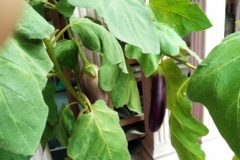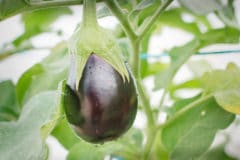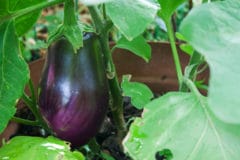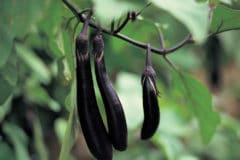Sunny and Warm
As natives of southeastern Asia Japanese eggplant thrives in sun and warmth. Cater to their whims by waiting until your soil and nighttime temperatures are above 70 degrees F before planting. Choose a spot in full sun, with loamy, well-drained soil on the slightly acidic side. A soil pH between 5.5 and 6.5 is ideal. Clean the site of debris and remove all weeds by their roots.
Expert planting tips:
- Be patient when planting these tender temperamentals. Below 70F, they’re highly susceptible to cold injury.
- Dig holes 2 feet apart in rows 3 feet apart, at the same depth as the eggplants’ containers. Work ½ cup of organic tomato food into their bases.
- Gently loosen the potting medium around the roots of the plants, center them in the holes and replace the soil. Water thoroughly and keep the soil evenly moist through the growing season.
- Right after planting, place tomato cages around the eggplants for support.
Bug Off
Flea beetles are to young Japanese eggplants what the Enola Gay was to Japan: winged destruction. Keep them away by wrapping each tomato cage with row-cover fabric that lets water and light in. Secure it with clothespins.
Expert growing tip: Flea beetles are most damaging in early spring. Once your plants have begun to flower, you can remove the row covers.
Mealtime
Japanese eggplants are heavy feeders. Encourage healthy leaves with nitrogen-rich, organic blood meal one-third of the way through the growing season. After fruit appears, apply a dose of half-strength fish emulsion (for potassium) at the two-thirds mark.
Pinching Protocol
You’ll have to pinch your Japanese eggplants twice in their lives:
- Pinch the first set of buds off to encourage bushy growth and heavy fruit. Otherwise, you’ll get tall, spindly plants with lots of leaves and a skimpy harvest.
- Pinch the fruit lightly to test its ripeness. If it dimples and won’t spring back, it’s ready to harvest. Cut it from the plant with a sharp knife, leaving a bit of stem attached.
By following proper care and guidelines for growing your Japanese eggplant, before you know it you’ll have a bountiful harvest to delight your taste buds.












